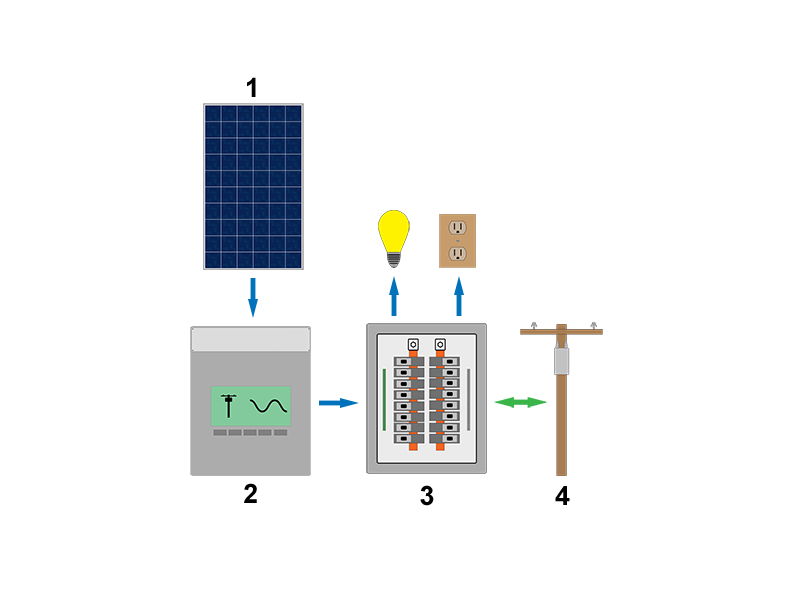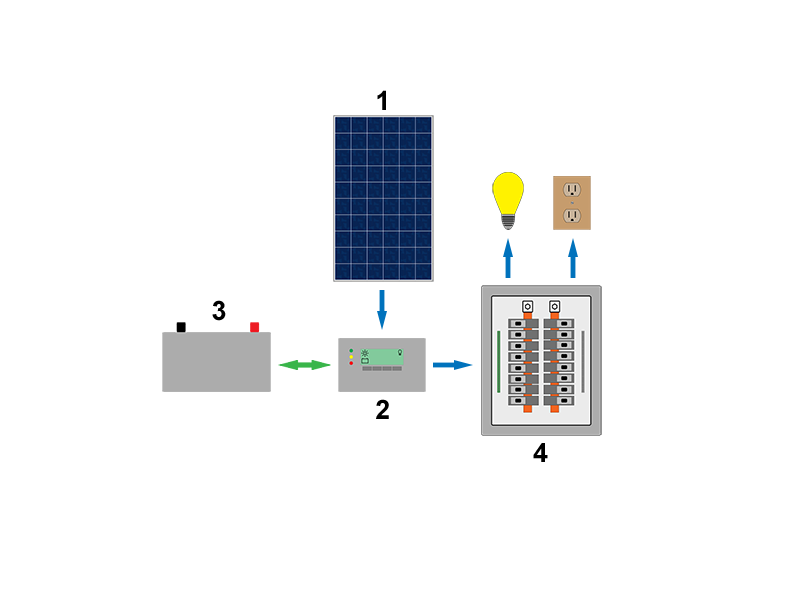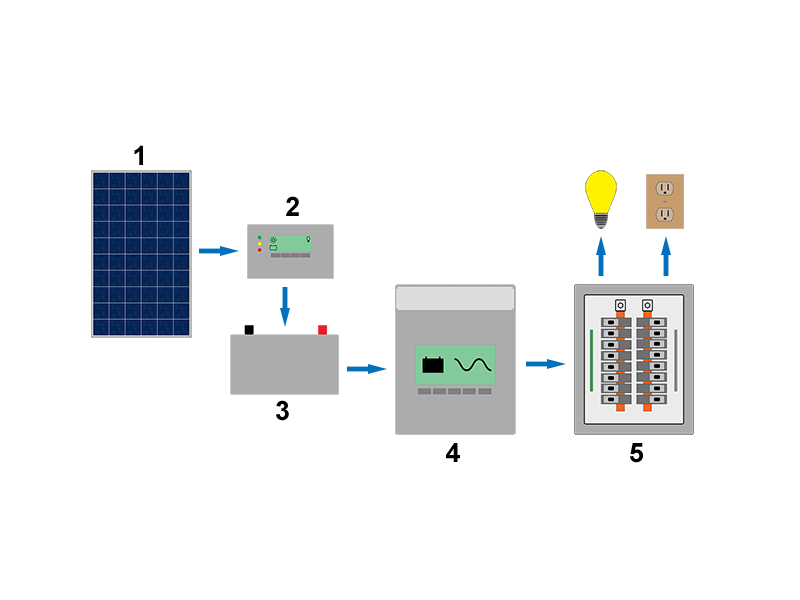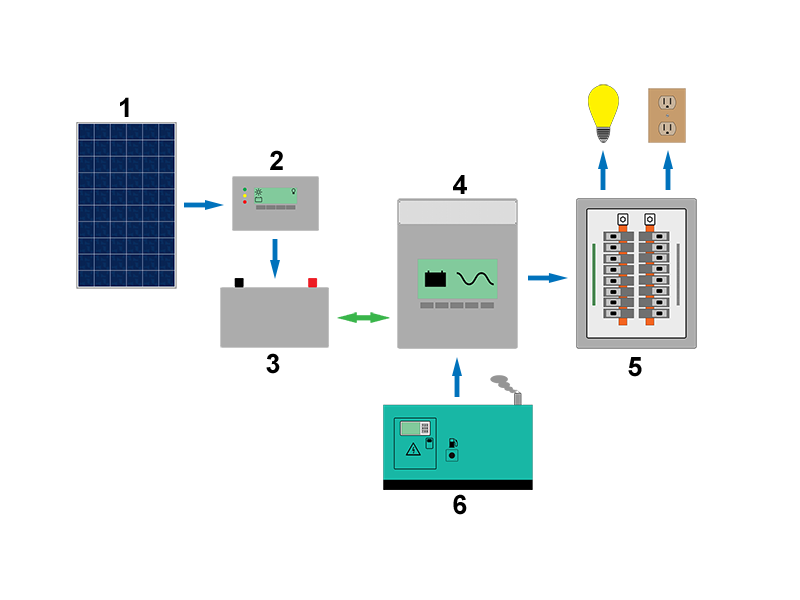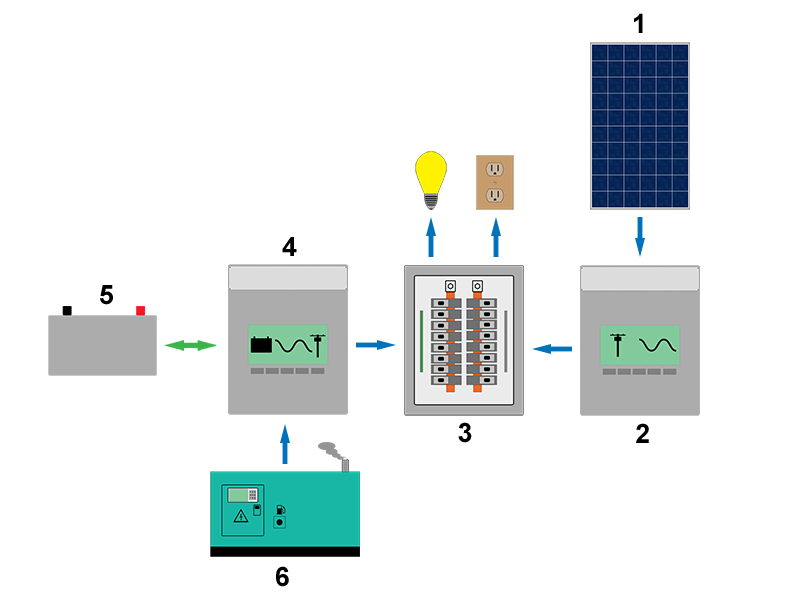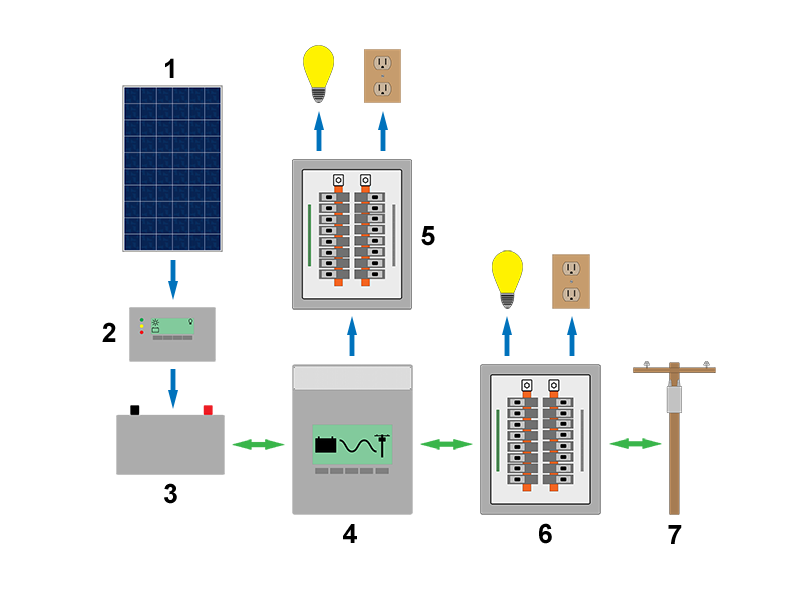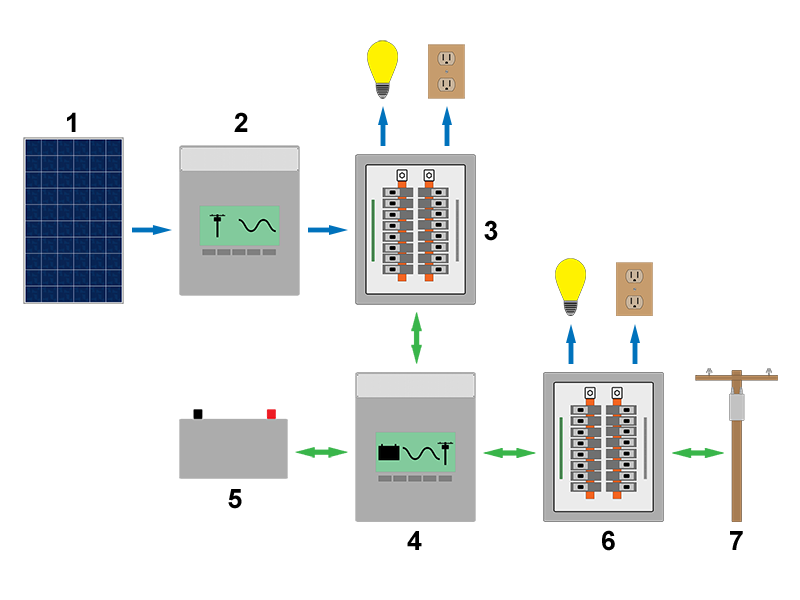PV system types
OSSP is focused on stand-alone PV systems, nonetheless it is important to distinguish the different system types and associated terminology as it will help when designing a system and selecting equipment.
Contents
Grid-tied PV systems
PV systems installed that have a grid connection are called grid-tied systems. The inverters that come with these types of systems are called interative as they are capable of interacting with the grid by matching its voltage and frequency. As a system of this type produces energy, it must either be consumed on the presmises or it will be fed back into the grid - through a meter - to be used by other customers. These systems cannot store energy and do not provide backup power in the case of a power outage. The majority of PV systems installed globally are of this type.
Stand-alone systems
PV systems installed in areas that lack a grid connection are called stand-alone systems, but are also commonly referred to as battery-based or off-grid systems. These systems take many different forms, but they almost always incorporate some type of storage, typically a battery bank, and one or more charging sources. In addition to solar PV, these systems may include a generator, wind, or hydro as well. These systems with multiple charging sources may also be referred to as hybrid systems. Stand-alone systems can use alternating current and direct current as charging sources and can supply alternating and direct current for loads. The various different stand-alone system types are depicted below.
Direct current only
A common system in less developed off-grid areas - common with systems less than 100W of PV. An economical option to provide lighting and energy for small appliances. Using only direct current has the advantage avoiding energy losses due inefficiencies created by an inverter (inverters are typically only around 85%-95% efficient) and the energy that is required to power an inverter when it is standing by. The disadvantage of not having an inverter is that most appliances are designed for use with alternating current, therefore the available DC appliance market is often much smaller.
Any connections to a battery bank should run through what is called a low voltage disconnect which will disconnect loads if the voltage of the battery bank drops too low in order to protect the batteries. Often times, as depicted in the image, a low voltage disconnect is integrated into the charge controller.
With an inverter
An inverter becomes an essential part of any PV system that is intended to power anything beyond small lighting and appliance loads. A standard inverter enables the use of alternating current appliances. An inverter does have efficiency losses and stand-by consumption losses, but it makes a PV system far more versatile.
